Developing an application, starting an online store or any other business, organizing a conference are all examples of projects. The projects can be simple and complex, low-budget and expensive, short-term and long-term. The term “project” is used in various fields: sales, IT, education, construction, and everyday life.
Regardless of the complexity and scope, any project needs planning first, and then management, i.e. coordination of actions, agreement of deadlines and budgets and progress tracking.
It is convenient to plan projects, and then manage them with the help of special software, most often these are task trackers. The best project planning tools are visual, simple and intuitive for all team members. We will talk about these below.

Among the top tools for planning own activities, we can highlight the following:
- Worksection
- Asana
- Wrike
- ClickUp
- Smartsheet та ін.
Later, we will analyze each planning service in more detail, but first we need to answer the question: What is project planning and what are the main stages of project planning?
What is project planning?
If you consider planning as part of project management, it will be one of the most important ones. The success of the case will largely depend on the quality of planning. This activity aims to answer the following questions:
- What and why should be done?
- How and when should it be done?
- Who will do it and what are the costs?
5 stages of project planning
In order to understand what tasks should be solved by planning programs, it is necessary to understand what stages a project goes through from idea to completion.
Planning usually consists of the following steps:
- Communication with interested parties (stakeholders). Firstly, it is necessary to understand who is interested in the success of the project. These can be customers or end users of a product/service. It is necessary to describe stakeholders’ interest and what tasks these people will perform. Sometimes one person controls and directly participates in the work. If the interested parties do not know each other, it is worth organizing a meeting: offline or online. The expectations from this collaboration should be discussed.
- Describing goals. After the meeting of interested parties and their discussion of important issues, the goals of the project should be clearly defined. Accordingly, it will be possible to determine what exactly the result of the work would be.
- To-do list. When the goals are clear, the big stages should be broken down into smaller ones, and specific tasks, their sequence, priority, and interrelation should be written down. Here, a Gantt chart with described dependencies in the project will be useful.
- Making a schedule. Key dates should appear in the calendar: starting dates for particular tasks, intermediate control and deadlines, as well as further steps.
- Risk management and, if necessary, adjustment of plans. When there is a detailed plan, it is easier to see potential reasons why the work may not go as desired. Something can be corrected even before the start. It is also worth thinking of some extra time in the plan in case of force majeure.

Project planning in practice: an example
Of course, each company has its own planning features. But on the strategic level, it will be good to make a template that will speed up the planning.
For example, if the project is the creation of a website, the process of its development will look something like this:
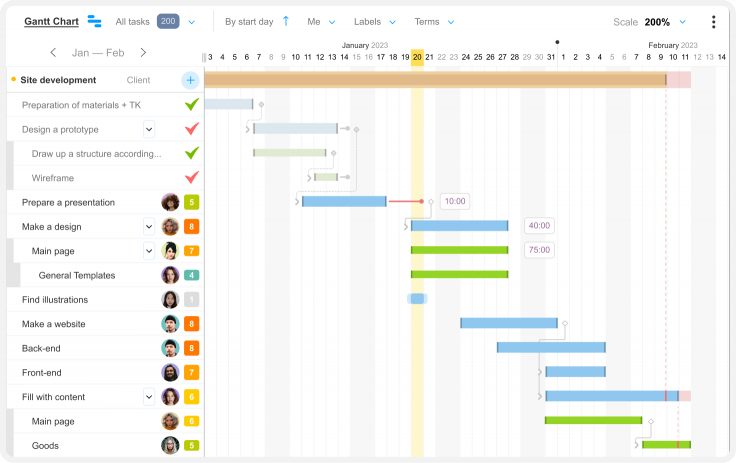
Gantt Chart in the Worksection
You can see that the main stages of work are listed: preparation of materials, TR, design of the prototype, and so on. The tasks go from main to secondary. Although some processes may in fact be parallel, for example, when writing content for a blog, articles can be written by several authors at the same time.
You can also see that large tasks are broken down into smaller ones. For example, the design development task is divided into several separate parts: the main page, templates of other pages, etc. The more complex the project, the more subtasks and performers.
We also see the link to the calendar and the total time spent on a task, as well as performers. This planning format offers the manager or project manager to quickly get an overview and, if necessary, find an answer to any question about the project.
To make planning even more effective, it is worth developing a template for working with tasks, where each one is treated in a similar way:
- the project is indicated that the task belongs to ;
- right in the title, the essence of the task is briefly described;
- a person responsible is appointed;
- the deadline is specified;
- a detailed description is attached, if necessary, as well as useful/necessary files for the task;
- if the task is divided into several parts, you can make a checklist, which will immediately show what has already been done.
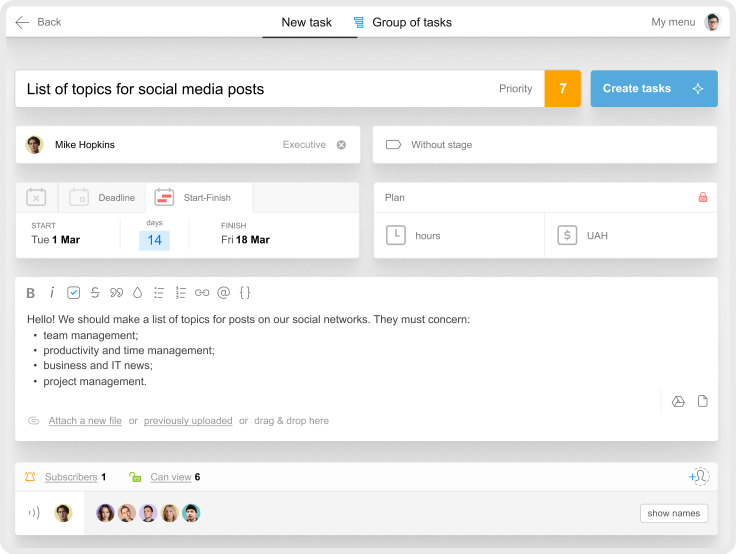
5 Most Popular Methodologies of Project Management
Not only representatives of the IT field know about Agile or Kanban, although it is in this field that the listed approaches are used most often.
Based on the general approach, specific procedures and methods are developed.The most famous methodologies are:
Agile Harvard Business Review analysts called it “a key advantage of the digital era.” In fact, this is not so much a methodology as a general principle of interaction between project participants to promptly respond to changes.
Kanban The main tool here is an electronic version of a regular physical board, on which cards with the specified status for each task could be posted.
Scrum An approach in which the goal is achieved by sprints. The project is divided into tasks, each of which fits into a short period of time — a sprint (usually lasting one or two weeks). The results of the sprint – new product functions or tools – can be shown to the target audience and receive feedback from them in order to improve the quality of the final product.
Waterfall The name of the methodology fully reflects its essence. Objectives are arranged in a hierarchical order. Until the lower-level goal is met, work on the upper-level goal is not started.
PRINCE2 An approach patented by the Chamber of Commerce and Industry of Great Britain. Great attention is paid to detailed documentation, as it is experience that is considered the basis of risk reduction.

5 Key Principles of Project Management
Methodologies differ in “philosophy”, ways of setting priorities, but the main thing, however, remains common. This can be called the principles of project management:
- Everyone should know exactly what to do and when. It is very important that each task is assigned to a person responsible for its completion.
- The team needs effective communication.
- Coordination should be carried out by the leader, to whom all information flows go.
- The leader performs his functions with the help of appropriate tools.
- After the completion of the project, summaries are drawn up, mistakes are analyzed and ways are developed that will prevent them from happening again.
Choosing the best planning tool
There are more than enough offers on the software market, you can choose an option for any of the methodologies described above. Most popular programs have the following basic functionality:
- forwarding files;
- communication tools;
- calendar, Gantt chart;
- the ability to create and delegate tasks and monitor their status.
Many have a friendly interface and an attractive design. Therefore, it is worth choosing a product that corresponds to the specifics of the company and the projects with which it deals most often. For example:
- in the field of design and IT development, functions to approve layouts with the customer are relevant;
- for an educational company, convenient access to documents (courses, tests) and the ability to make presentations are important;
- a manufacturing company will need functionality to optimize the work with the material database or complex reporting.
A benefit for the tool will be its compatibility with other popular digital products. Suppose most of the team members create documents in Google Docs, or at the beginning of the project a certain amount of documentation in this format has already been accumulated. If the project management tool allows you to integrate Google Docs into it, the problem of working with documents is solved.
Sometimes integration with external services makes it possible to compensate for gaps in functionality. For example, a project management service does not have a live chat function, in which team members communicate in real time. But you can implement integration with Google Hangouts, a product for exchanging messages and organizing conferences.
Another group of task tracker evaluation criteria refers to hardware. Where are the service provider’s servers located? Do they withstand peak loads? Is their data securely protected? The company, which has serious technical capabilities, ensures the work of a large team and data protection in 24⁄7 mode.
An important advantage of the software is the availability of a free trial version. As a rule, it is not enough for large-scale projects, instead, with its help, you can test the tool, try the functionality you need at work, and then buy it.
TOP 15 Best Project Planning Tools
Worksection
Platforms: Web, Windows, iOS and Android.
Features: A tool for project management, which both “techies” and representatives of non-technical specialties can easily work with. During development, all tasks of project managers and team members are taken into account: planning, communication, Kanban boards, control of financial costs, and reporting.
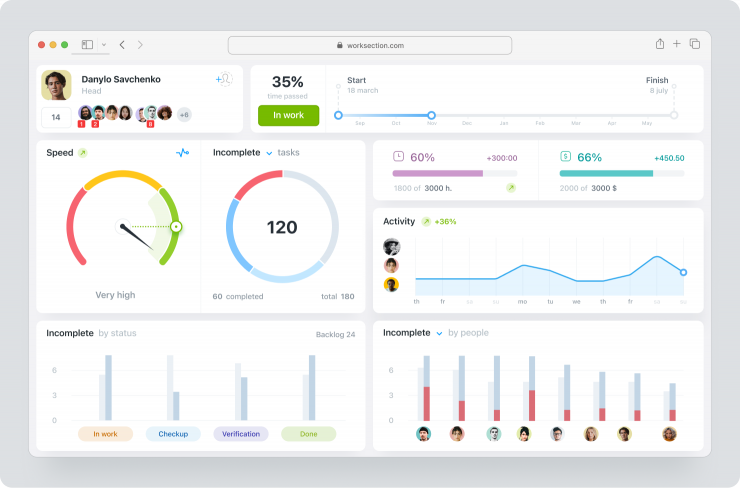
Data security and uninterrupted operation are ensured by SSL encryption, a reliable server base, and a two-factor authentication procedure. The response time of technical support is between 10 and 60 minutes. There are integrations with Google Docs, Slack, Google Calendar, Telegram, Viber.
Drawbacks: Users would like the product to work offline. There are also questions regarding the operation of the mobile application.
Pricing: A 14-day trial period is available. There is also a free version, it provides 0.1 GB of data storage capacity, 2 active projects and 5 users.
For $69 per month you get access for 20 team members and up to 20 projects. For $299 you get an unlimited user/project number and 500 GB of data storage.
Rating at Capterra: 4.9 of 5.
Asana
Platforms: Web, iOS, Android, Windows, Mac.
Features: This work planning tool is good for its functionality and interface, bright and at the same time not intrusive. The software is positioned as comprehensive, covering all project management tasks, accordingly, it contains a full set of basic functions. Integrations with a large number of external tools and services (Jira Cloud, Adobe Creative Cloud, Slack, Microsoft Office 365, Gmail, OneDrive, Box, DRopbox, Gitlab, Trello) are available.
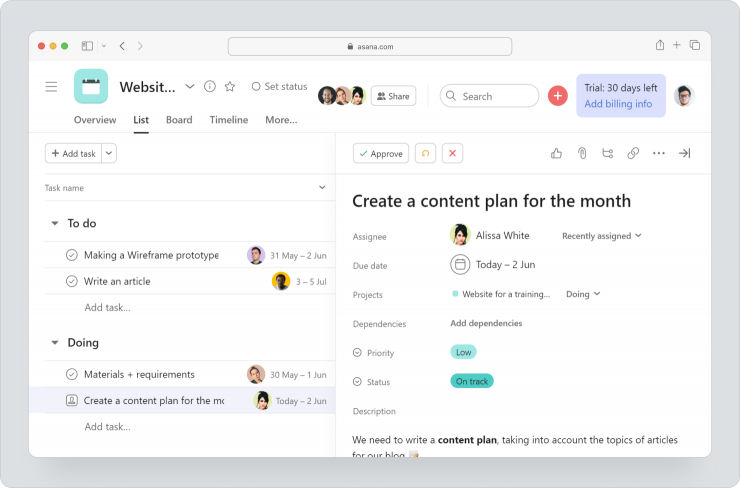
Drawbacks: There are problems with the setting of email notifications, there are few tools for working with text, there are not enough integrations.
Pricing: A 30-day trial period is available. Paid tariffs cost between $13.49 and $30.49 per user/month when paid monthly, and between $10.99 and $24.49 per user/month when paid yearly. There is also a free version for teams with up to 15 users. This tariff does not include project templates though. For $13.49 you get access to the workflow constructor and a possibility to create closed projects and groups.
Rating at Capterra: 4.5 of 5.
Wrike
Platforms: Web, iOS, Android, Windows, Mac.
Features: The peculiarity of this work planning tool is its flexibility. The user can choose the dashboard visualization. A Gantt chart or a table, a Kanban board or a project schedule – any team member can easily switch between windows and modes to control his work area and have a general overview of the progress. Lots of templates and integrations.
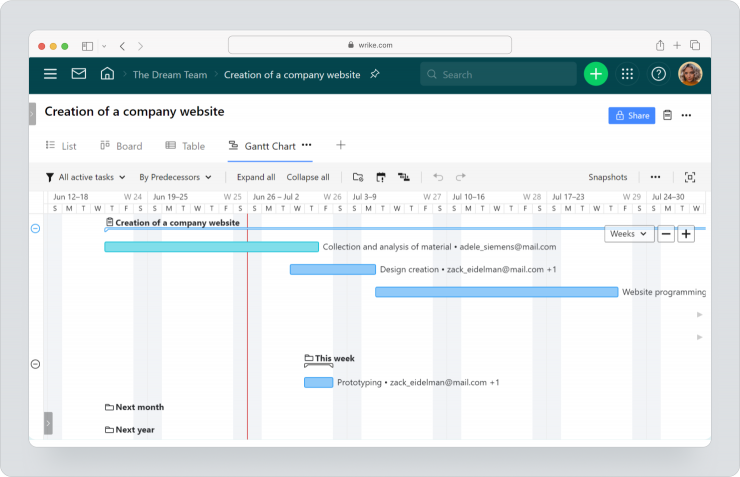
Drawbacks: In order to fully use all the advantages of the product, you need to contact technical support often, and it is not always prompt.
Pricing: A 14-day trial version is available. Then you need to choose one of the tariff plans, which cost between $9.80 and $24.80 per user/month. There is also a free version, but it is limited to 2 GB storage capacity for a team, with a limited number of active tasks. The cheapest tariff offers 2 GB storage capacity for each user, interactive Gantt charts and integrations.
Rating at Capterra: 4.2 of 5.
GanttPro
Platforms: Web, iOS, Android.
Features: The tool helps to work carefully on setting tasks: divide them into subtasks and track the status of each. The user chooses between the usual visualization methods in the form of a Gantt chart, a dashboard or a board. Statuses, priorities, deadlines are as in usual task trackers. Integration with Jira, Google Drive, Slack and other popular applications is available.
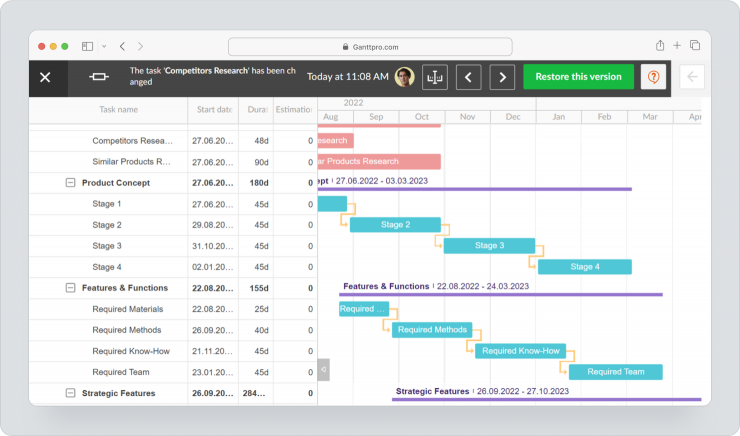
Drawbacks: Not all users are satisfied with the fact that it is not very convenient to edit data in the application, so most of the time you have to work with the product from a PC.
Pricing: A free trial version is available. The basic tariff costs $7.99 per user/month, offering Gantt charts, a calendar and automatic planning. For $19.99, you get more features, like project templates, mass changes, saving filters, deadline notifications.
Rating at Capterra: 4.8 of 5.
Kissflow Project
Platforms: Web, cloud, SaaS.
Features: A tool with no unnecessary functions. Kanban board for visibility, functionality for placing priorities to meet deadlines. Reminders of upcoming task deadlines. Integration with Google Workspace and external tools via REST API is possible.
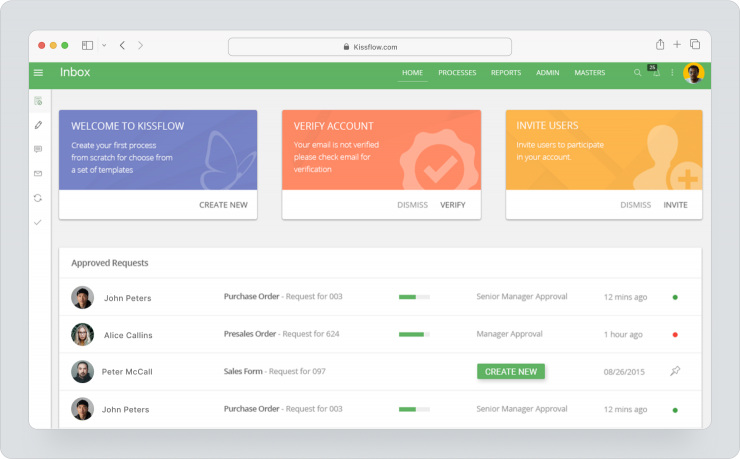
Drawbacks: Not everyone is satisfied with messages, document export and integration. It is also worth noting that the speed and efficiency of the service strongly depends on the quality of the Internet connection.
Pricing: A free trial version is available. Paid tariffs start at $10 per user/month, if you pay yearly, or $18 when paid monthly. For more details on the features of each particular tariff you should consult a manager.
Rating at Capterra: 5 of 5.
ClickUp
Platforms: Web, iOS, Android, Windows, Mac, Linux.
Features: A product with a full set of basic functions: tasks and templates for them, checklists, possibility to filter documents by specified criteria, calendar, task timeline.
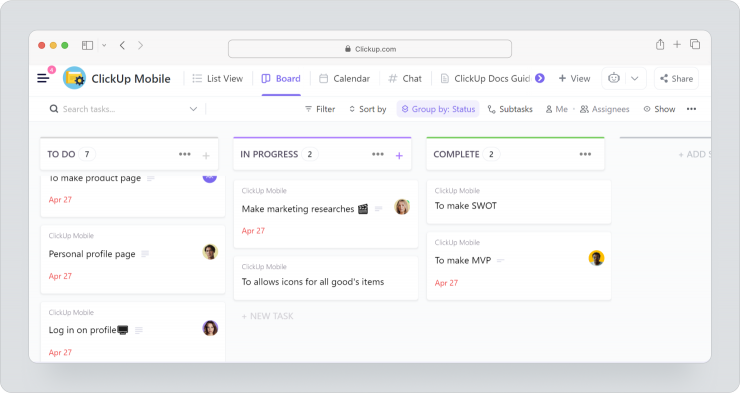
Functions for working with documents, including wiki documents: creation, editing, access administration. Group chat, six types of reporting templates. Integrations with Google Workspace, Dropbox and more than 1,000 Zapier automation constructor tools are available.
Drawbacks: A mobile app could be more user-friendly.
Pricing: A 14-day free trial version is available. There is also a free tariff plan with 3 boards and a file download of up to 100 MB each. A tariff plan for $5 per month offers unlimited downloads, unlimited number of Gantt charts, guest access and integrations.
Rating at Capterra: 4.7 of 5.
MeisterTask
Platforms: Web, iOS, Android, Windows, Mac.
Features: The software is suitable for Agile projects. The Kanban board offers convenient and effective control over tasks and resources.
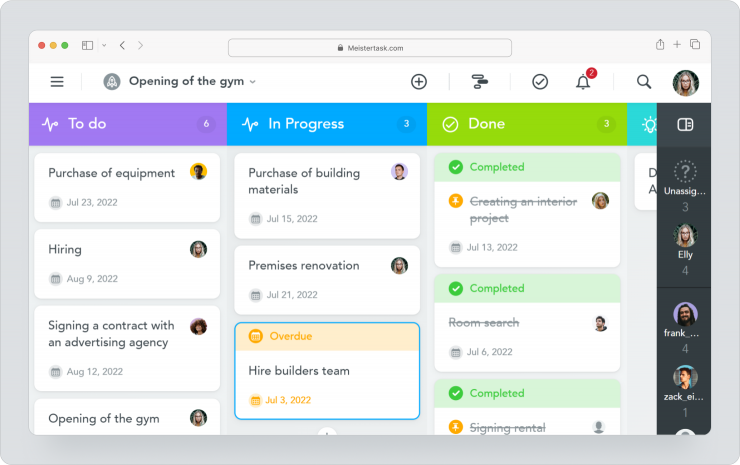
A full set of communication features, including comments and mentions, integrations with Slack, Microsoft Teams, Google Workspace, MindMeister, and other tools and services are available.
Drawbacks: There are shortcomings with comments, file export, field customization, and integrations.
Pricing: There is a free trial version; a completely free tariff plan is also available, with up to 3 projects and file downloads up to 20 MB each. For $8.25 per month you get an unlimited number of projects, up to 200 MB data storage, as well as task archive and beautiful backgrounds.
Rating at Capterra: 4.7 of 5.
Flock
Platforms: Web, iOS, Android, Windows, Mac.
Features: All key functions for planning, communication and control are available: file sharing, collaboration tools, documents search, creating video calls in one click. Integration with Google Drive and GitHub Repos.
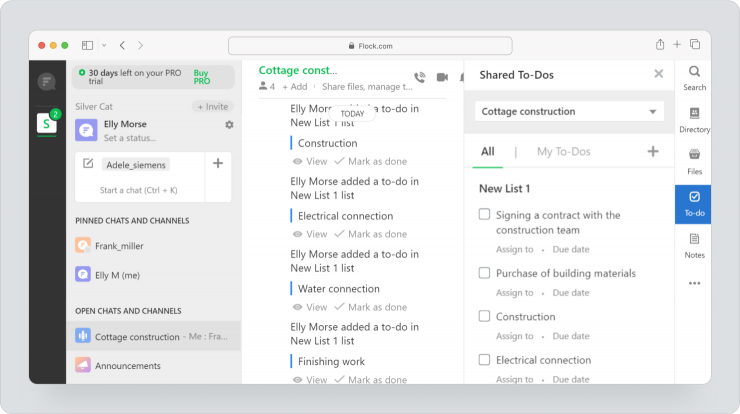
Drawbacks: There are difficulties with settings for administrators, problems with sound and integrations. The app is a bit slow.
Pricing: A free trial period is provided. The free tariff is provided for teams of up to 20 employees with 5 GB of data storage and unlimited one-on-one communication. For $6 per month (or $4.50 if paid at once for a year), the product can be used by up to 100 team members, with up to 10 GB data storage capacities for every user, as well as the ability to demonstrate the screen and make group video calls.
Rating at Capterra: 4.5 of 5.
Forecast.app
Platforms: Web, iOS, Android.
Features: The key highlight of this planning tool is its smart approach to automation. Artificial intelligence collects project experience in more than 40 countries and uses it to make work more efficient.
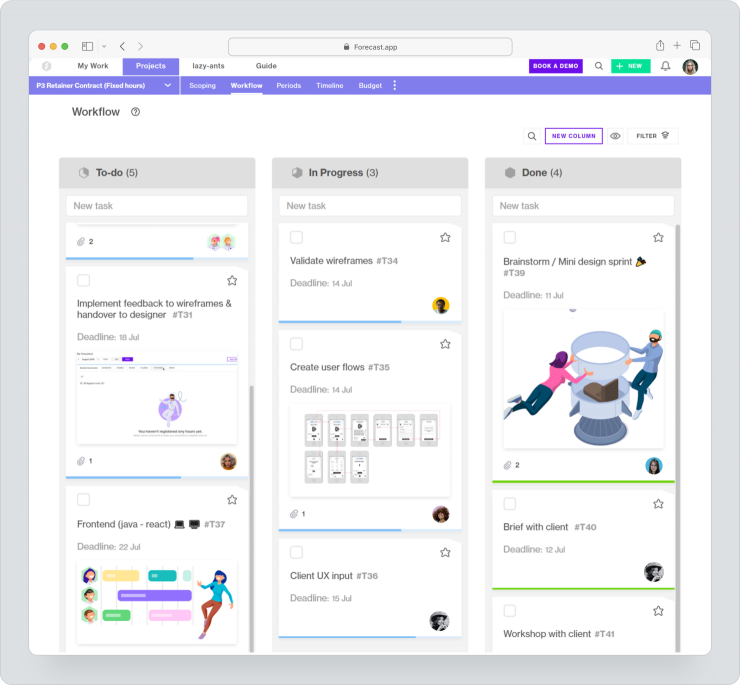
The tool can automatically create timelines and budgets if you mark milestones and metrics. Visual dashboard helps to get an overview and effectively control finances and deadlines. Integration with Jira is available.
Drawbacks: Not everyone finds it easy to learn how to use the product, the terms of unsubscribing are not completely clear. There are problems with synchronization.
Pricing: A free trial version is available. Paid tariffs cost $29 per user/month, with tools for time management and teamwork, as well as business analytics.
Rating at Capterra: 4.5 of 5.
Smartsheet
Platforms: Web, iOS, Android.
Features: This program will appeal to anyone who likes to work with spreadsheets, but is tired of the complexities of Excel. The tool will calculate everything by itself and add a company logo to the document.
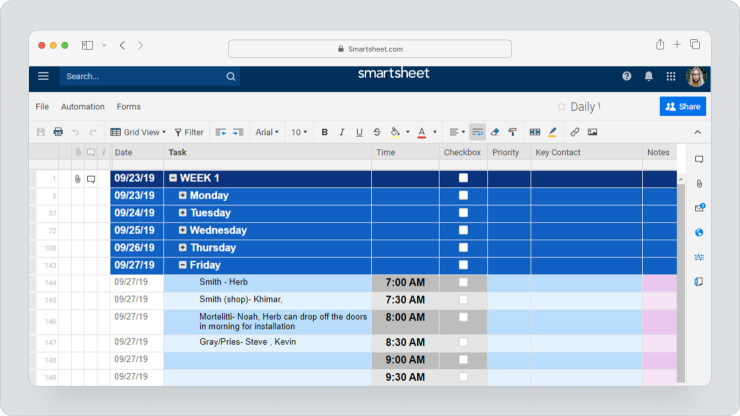
Functionality which is typical for task trackers is available: task cards, calendar, Gantt chart, reminders. Integrations with Jira, popular Google and Microsoft tools are available.
Drawbacks: Not the most convenient product in terms of working with tasks, there are also problems with notifications. Users would like to see more visual tools for working with projects.
Pricing: A free trial version is available. The cheapest paid tariff costs $7 per user/month, with up to 20 GB data storage capacity, automation, personal reporting.
Rating at Capterra: 4.5 of 5.
ProWorkflow
Platforms: Web, iOS, Android, Windows, Mac.
Features: A software product that allows all project participants to monitor its progress, keep abreast of events and instantly react to changes. You can always have an overview of the project life cycle: performers, deadlines, resources.
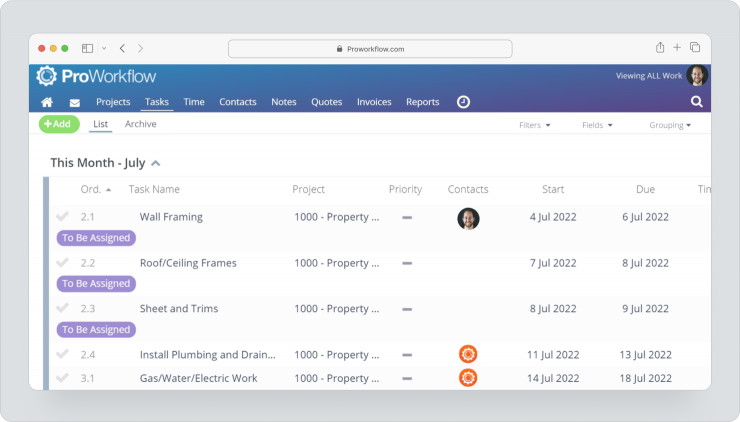
Interaction with the tool is convenient and easy due to the click and drag mechanism. Its highlight is integration with well-known accounting platforms (Xero, MYOB, Quickbooks). Integration with Google Workspace, Box and OneDrive is also provided.
Drawbacks: Not all users are satisfied with reporting, some would like more storage capacity.
Pricing: A free trial version is available. Paid tariffs cost between $18 and $27 per user/month when paid yearly (and between $20 and $30, when paid monthly). Basic tariff offers unlimited number of projects and up to 25 GB storage capacity, while a more expensive tariff offers 50 GB and more editing features.
Rating at Capterra: 4.5 of 5.
Celoxis
Platforms: Web, iOS, Android, Windows, Mac, Linux.
Features: A real-time planning tool for the team provides the project manager with a 360-degree view: task and performer statuses, bug reports, documents, tickets. A special feature is the functionality for visual expanded reports. The tool can be easily adjusted to companies of different sizes in different fields of work.
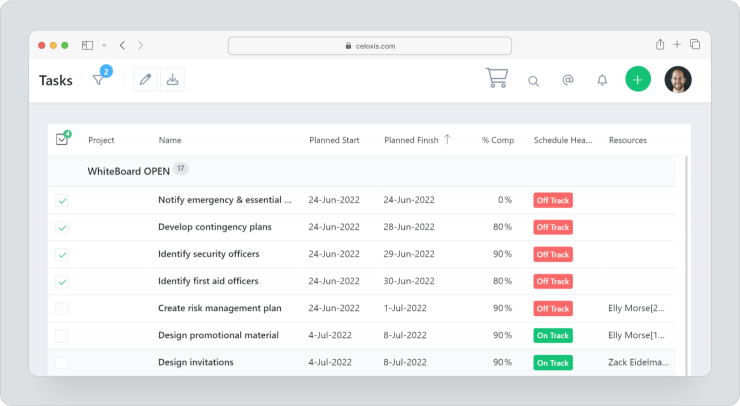
Drawbacks: The interface needs improvement, and to understand how the product works, you need to learn a lot of instructions.
Pricing: It is possible to use the free trial version. The cloud version costs from $25 per user/month, each user gets 2 GB of storage capacity.
Rating at Capterra: 4.4 of 5.
Easy Project
Platforms: Web, iOS, Android, Windows, Mac, Linux.
Features: An effective tool for team coordination at all levels, from executives to top managers, with stakeholders’ monitoring. Due to the visualization of resource distribution, the product allows you to avoid bottlenecks and thus ensures the continuity of processes. Artificial intelligence is able to predict the course of the project and help in its optimization.
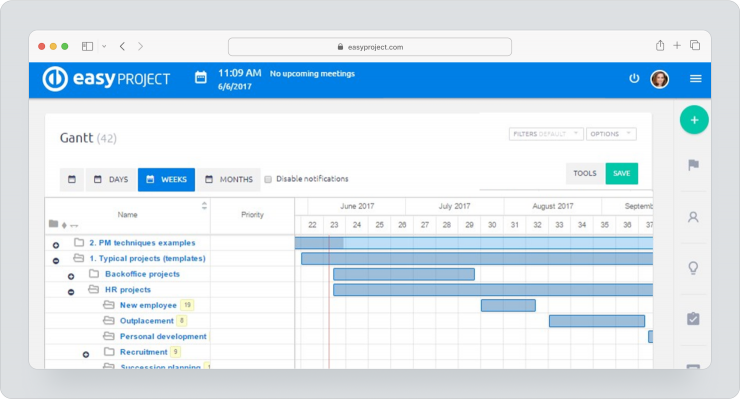
Drawbacks: Users do not like long reporting updates, there are problems with guest access, and the timer does not always work correctly.
Pricing: To get acquainted with the functions, you can use a free trial version. Paid tariff costs from $25.75 per user/month, with interactive Gantt charts, Kanban boards, milestones and budgeting tools.
Rating at Capterra: 4.4 of 5.
Project Insight
Platforms: Web, iOS, Android, Windows, Mac.
Features: Planning service with an intuitive, aesthetically pleasing interface for efficient and comfortable work, offering standard functionality for task setting, prioritization and control, as well as a real-time monitoring of the project progress for each participant. Integration with Box, Microsoft Office, Microsoft Outlook and Quickbooks is available.
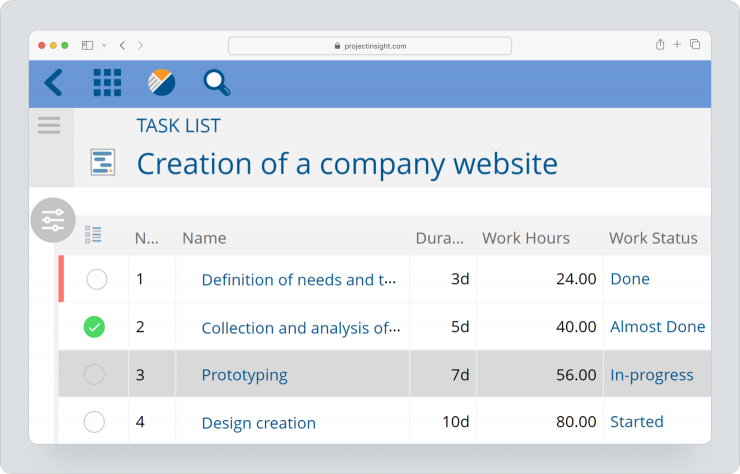
Drawbacks: The app is not really convenient, the settings are sometimes difficult, and some users would need assistance with the reporting.
Pricing: A free trial is available, as well as a free tariff plan with unlimited user number, Gantt charts and Kanban boards. For $3 per month you will additionally get budgeting tools, scheduling and time tracking options.
Rating at Capterra: 4.4 of 5.
Zoho Projects
Platforms: Web, iOS, Android.
Features: The interface of this project planning program resembles social networks, as the functional part emphasizes effective communication. At the same time, the software has other key functions: the status of tasks and performers, a calendar and reminders of approaching deadlines by email, a comparison of planned and actual time spent.
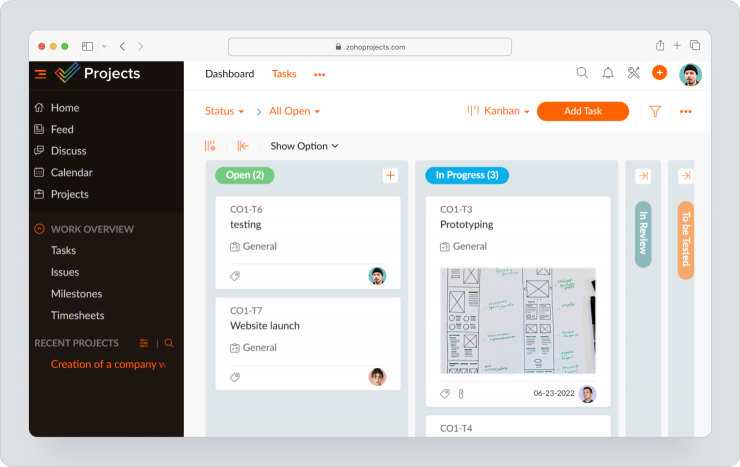
The program can be called an ecosystem that integrates with Zoho’s own products and external tools: Microsoft Office 365, Microsoft Teams, Google Drive and Zapier.
Drawbacks: The settings for projects and integrations are difficult for an inexperienced user. Reporting and budgeting functions need improvement.
Pricing: A trial version and a completely free version (for up to 2 users working on 3 projects) are available. For $5, you can manage an unlimited number of projects and have 100 GB of data storage space.
Rating at Capterra: 4.2 of 5.
Comparative table of top programs for planning and activities
Name | Platform | Rate |
| Worksection | Web, Windows, iOS та Android | 4,9 із 5 |
| Asana | Web, iOS, Android, Windows, Mac | 4,5 із 5 |
| Wrike | Web, iOS, Android, Windows, Mac | 4.2 із 5 |
| GanttPro | Web, iOS, Android | 4,8 із 5 |
| Kissflow Project | Web, хмара, SaaS | 5 із 5 |
| ClickUp | Web, iOS, Android, Windows, Mac, Linux | 4,7 із 5 |
| MeisterTask | Web, iOS, Android, Windows, Mac | 4,7 із 5 |
| Flock | Web, iOS, Android, Windows, Mac | 4,5 із 5 |
| Forecast.app | Web, iOS, Android | 4,5 із 5 |
| Smartsheet | Web, iOS, Android | 4,5 із 5 |
| ProWorkflow | Web, iOS, Android, Windows, Mac | 4,5 із 5 |
| Celoxis | Web, iOS, Android, Windows, Mac, Linux | 4,4 із 5 |
| Easy Project | Web, iOS, Android, Windows, Mac, Linux | 4.4 із 5 |
| Project Insight | Web, iOS, Android, Windows, Mac | 4.4 із 5 |
| Zoho Projects | Web, iOS, Android | 4.2 із 5 |
